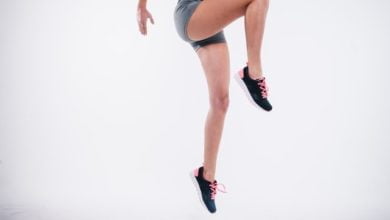12 gym conditions everyone should know

12 gym conditions everyone should know
Being a beginner in an unfamiliar environment can be intimidating at first. It can also be confusing.
If you hear people at a gym throwing up words you don’t know, and you don’t feel comfortable asking them what they mean, it can be even more frustrating.
Fortunately, M&S has you covered. A while ago, we released a glossary of gym terms with some definitions that can help you learn the language of training.
Here, we provide more terms and phrases that can help you raise a beginner’s level of knowledge of what we’re talking about.
Recommended: Need help building muscle? Take our FREE Muscle Building Course
1. Concentric
This is the actual weight lifting and muscle contraction you are training. The obvious example is a crimp iron.
When you use force in the biceps to bend the barbell up, this is the concentric part of the rep. The lifter can either perform the concentric part as fast as possible to increase strength and speed, or it can be performed under control to increase tension on the working muscles.
Also known as the “positive” part of a rep.
Related Topics: Optimal repetition speed and rest periods for muscle growth
2. Contraction
Contraction is the flexing of a muscle.
It can be performed on the top of a rep when lifting a weight, or it can be done when a muscle randomly flexes on its own.
Do you need an example? Flex the biceps, now. feel that? You just contracted the muscle.
3. Drop group
Drop sets are a popular and effective way to train muscles after a single point of failure.
The lifter will reduce the weight used after failure is reached, then perform more reps until failure is reached for the second time.
Let’s use the leg press as an example here. If you’re hitting 500 pounds, and you hit failure after 10 reps, you can reduce the weight by 100 pounds or so, then return to the position and do more repetitions.
The reduced weight is up to the winch or trainer. There is no standard number or percentage. If the weight drops twice in one set, it is known as the ‘double set of drops’.
Related Topics: How to Use Droplet Combinations for Strength and Inflation
4. Eccentric
We covered the concentric part of rep previously. Central deflection occurs when the tension on the muscle is reduced and the weight is lowered to the starting position.
This should always be kept under control for two reasons.
First, performing an eccentric too quickly can lead to potential injuries. Second, the eccentric phase is actually when the muscles are at their strongest, so you can train them more effectively by taking the time to go from the contracted position to the starting position.
The longer you perform the eccentric, the more difficult it becomes. Some cranky programs require five to ten seconds, also known as “negatives”.
Related: 5 reasons to add eccentric training to your routine
5. progressive overload
This is a principle you may have already followed without knowing it. The most common form of progressive overload is the increased weight you use over the number of sets you perform.
If you were to do the bench press for three sets of 10 reps, you would add weight to each set, even though the repetitions would remain the same. This means that the first two sets will not be made until failure.
The first set of 135 pounds might be easy, followed by a more difficult set with 155 pounds. Neither group presented the maximum challenge. Then, you add an extra 30 pounds to the bar to make 185, and all you get are 10 reps. It has now reached failure due to progressive overload.
Gradual overload can also be applied to reps and minutes on cardio.
6. LAUGH
This means “delegates in reserve”.
If you see a training or program history with this, this most likely means that you should not perform this combination to failure.
For example, if you’re doing a seated dumbbell, and your log reads “10 repetitions, 2 RIR,” you should perform the set until you can do two more repetitions, but you stop at that point.
So, you want to choose a weight that you can do for 12 reps. If that equals 30 pounds, you gain 30 pounds and stop at 10 reps.
Related Topics: How to Change Your Exercise Program for Non-Stop Gains
7. RPE
This acronym stands for “perceived voltage rating” or “perceived voltage rating”. It is more commonly used in weightlifting and strongman rings than in bodybuilding training.
Instead of focusing on weight, you pay attention to your effort based on a scale of 1 to 10.
If you are going to squat for 4 repetitions with an RPE of 8, you are carrying a weight that requires 80% of your effort to lift for 4 repetitions. If the RPE is 10, you will obviously go to complete failure. RPE 5 is pretty much a warm-up.
8. Pause rest set
This is another training method that allows a person to reach failure more than once, but does not have to lose weight.
The lifter performs iterations until failure is reached. After a 10- to 15-second rest period, the lifter performs more repetitions of the same weight until failure is reached a second time.
If you’re doing 150-pound seated rows for 10 reps, then stop after the 10th rep, count to 10 or 15, and then continue. You should get no more than five reps or so after that short rest. If you can, either you haven’t really trained to failure, or you should use a heavier weight.
9. Shredded
If someone says that you are torn, it means that you are very skinny, which is a compliment.
You have clear lines and the muscles can be seen very clearly. Bodybuilders and fitness enthusiasts love hearing this.
Other synonyms include ‘ripped’, ‘sliced’, ‘cubed’ and ‘chopped’, while flattery is usually greeted with open ears, it should be warned. If you don’t have abs, it won’t rip.
10. Fixed hold
Fixed reservations are also known as isometric reservations. They are used to help prepare the body for upcoming work, or they can be another way to train muscles after a failure.
If you’ve been doing planks or squats in the lower position for long periods of time, you’ve done static hangs. This is a great way to warm up at the start of a session.
Another static comment can be made at the end of the group.
Let’s use the incline dumbbell press as an example. You’ve reached the last rep you can do. If you try again, the weight will not rise. Instead, hold the weight from the top and squeeze the chest as hard as you can for as long as possible.
Bodybuilders use this method because they believe it will add density and thickness to the working muscles.
Related Topics: Pausing Reps Workout Program For Serious Strength Gains
11. Triset
You may be familiar with a comprehensive set, which is two exercises that are performed consecutively with no rest in between.
Triset sees that and raises you one. Performing three exercises in a row will be quite a challenge.
It is best to perform these movements or machines that do not require a lot of travel or commuting time. If you try to work on opposite sides of the gym at the same time, someone may jump into your machine when you’re not using it.
One great way to perform tricets is with dumbbells. Common shoulder raises are the front raises, the lateral raises, and the rear lateral raises. You can perform all three with the same pair of weights without moving. This can be done at home or in the gym.
Related Topics: Big Set, Triceps, Chest & Back Exercises
12. Size
Most people think that size depends strictly on the number of sets you do.
Volume is a measure that can determine how much effort you put into an exercise. The most common way to determine volume is with weights, sets, and repetitions.
If you lift 100 pounds for three sets of ten repetitions, you will multiply those numbers to determine the volume of this exercise.
100 pounds x 3 sets x 10 repetitions = 3000 pounds of volume.
Some lifters aim to perform as large as possible over the course of the exercise. If you see the word “volume” applied to a program, it could be something to do with this, or simply making sure you’re doing a good number of exercises and sets



